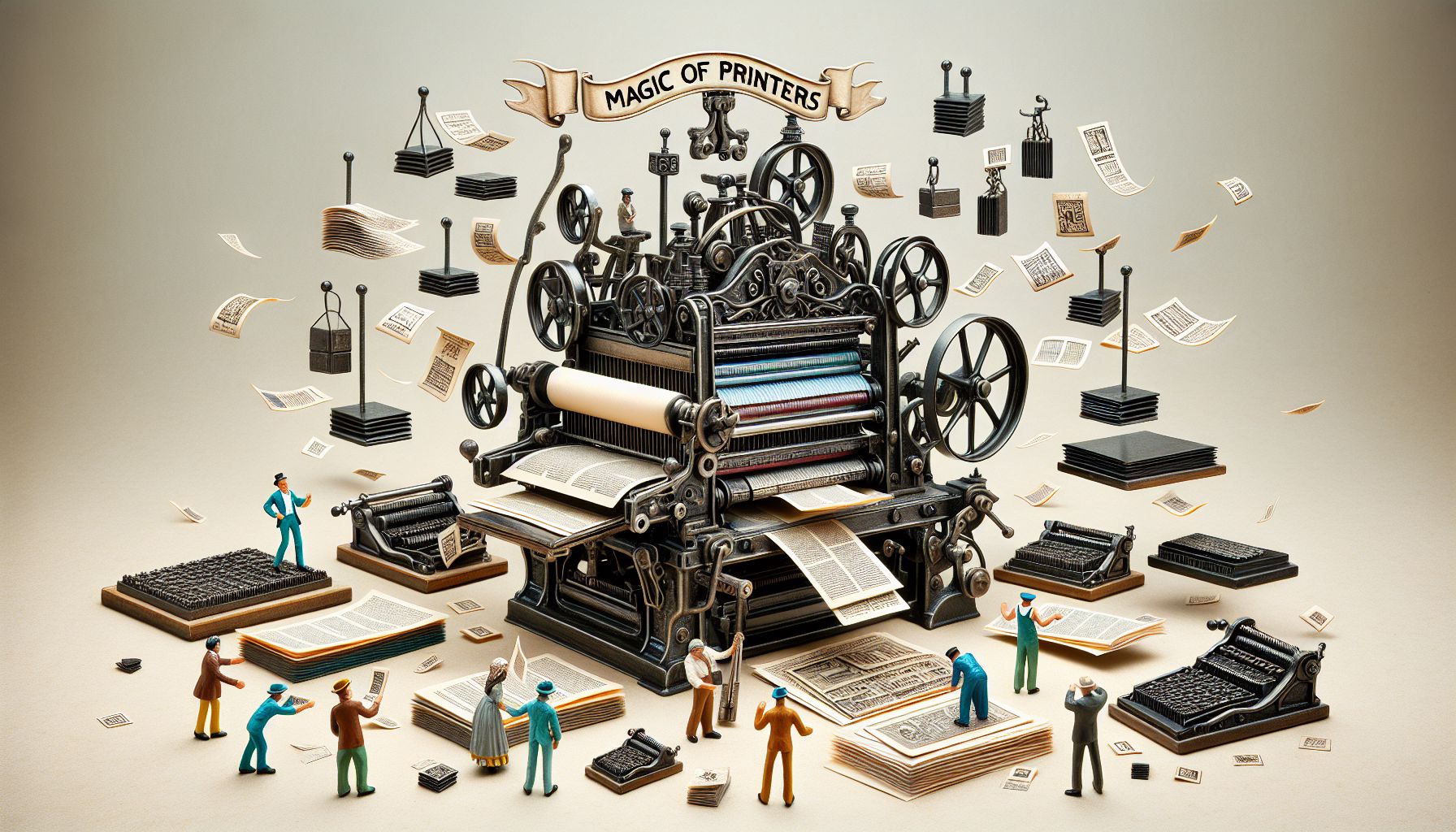In this digital age where everything seems to be done electronically, the humble printer often gets overlooked. However, printers still play a vital role in our daily lives, whether it’s for work, school, or personal use. From documents to photographs, printers are essential tools that allow us to bring our digital creations to life. In this comprehensive guide, we will explore the different types of printers, their functions, and how to choose the right one for your needs.
Types of Printers
There are several types of printers available on the market, each with its own set of capabilities and features. The most common types of printers include:
-
Inkjet Printers: Inkjet printers are perhaps the most popular type of printer for home use. These printers work by spraying tiny droplets of ink onto paper to create text and images. They are known for their high-quality output and relatively low cost.
-
Laser Printers: Laser printers use a toner cartridge and a heated fuser to create text and images on paper. They are known for their fast printing speeds and crisp, professional-looking documents. Laser printers are often used in office settings for their efficiency and durability.
-
All-in-One Printers: All-in-one printers, also known as multifunction printers, combine the functions of a printer, scanner, copier, and sometimes a fax machine into one device. These printers are versatile and space-saving, making them ideal for home offices or small businesses.
-
Photo Printers: Photo printers are designed specifically for printing high-quality photographs. These printers use specialized ink and paper to produce vibrant, long-lasting prints that rival professional photo labs. Photo printers are a must-have for photography enthusiasts or anyone who wants to preserve their memories in print.
-
3D Printers: 3D printers are a more advanced type of printer that use additive manufacturing to create three-dimensional objects. These printers are used in a variety of industries, including healthcare, aerospace, and automotive, to produce prototypes, custom parts, and even medical implants. 3D printing technology is constantly evolving and has the potential to revolutionize manufacturing processes in the future.
Choosing the Right Printer
When it comes to choosing the right printer for your needs, there are several factors to consider. Here are some key questions to ask yourself before making a decision:
-
Print Quality: Do you need high-quality prints for professional documents or photos? If so, you may want to opt for a printer with a higher resolution and better color accuracy.
-
Printing Speed: Do you have a high volume of printing tasks that require quick turnaround times? If speed is important to you, a laser printer may be the best option for your needs.
-
Connectivity: Do you need to print from multiple devices, such as smartphones or tablets? Look for a printer with wireless connectivity options like Wi-Fi or Bluetooth to easily print from any device.
-
Cost: Consider not only the upfront cost of the printer but also the cost of ink or toner cartridges. Some printers may be more affordable initially but have higher ongoing costs for consumables.
-
Size and Design: Take into account the size and design of the printer, especially if you have limited space in your home or office. All-in-one printers are a great space-saving option for those who need multiple functions in one device.
Maintenance and Troubleshooting
Like any electronic device, printers require regular maintenance to keep them running smoothly. Here are some tips for maintaining your printer and troubleshooting common issues:
-
Clean the Print Heads: Inkjet printers can sometimes get clogged print heads, leading to streaks or smudges on prints. Most printers have a utility that allows you to clean the print heads, which can help resolve this issue.
-
Use Genuine Ink or Toner: To ensure the best quality prints and prolong the life of your printer, always use genuine ink or toner cartridges. Generic or third-party cartridges may save you money upfront but can lead to poor print quality and potential damage to your printer over time.
-
Update Printer Drivers: Make sure to regularly update your printer drivers to ensure compatibility with your operating system and to fix any bugs or performance issues.
-
Clear Paper Jams: If you experience a paper jam, follow the printer’s instructions to safely remove the jammed paper. Be careful not to force the paper out, as this can damage the printer.
-
Consult the User Manual: If you encounter a problem with your printer that you can’t resolve on your own, consult the user manual or visit the manufacturer’s website for troubleshooting tips and support.
Conclusion
Printers may not be the most glamorous or cutting-edge technology, but they continue to be indispensable tools for both personal and professional use. From printing documents and photos to creating prototypes and custom parts, printers play a crucial role in our daily lives. By understanding the different types of printers available, choosing the right one for your needs, and properly maintaining your printer, you can ensure that your printing tasks are completed efficiently and with high-quality results. The next time you hit the print button, take a moment to appreciate the magic of printers and the convenience they bring to our lives.


